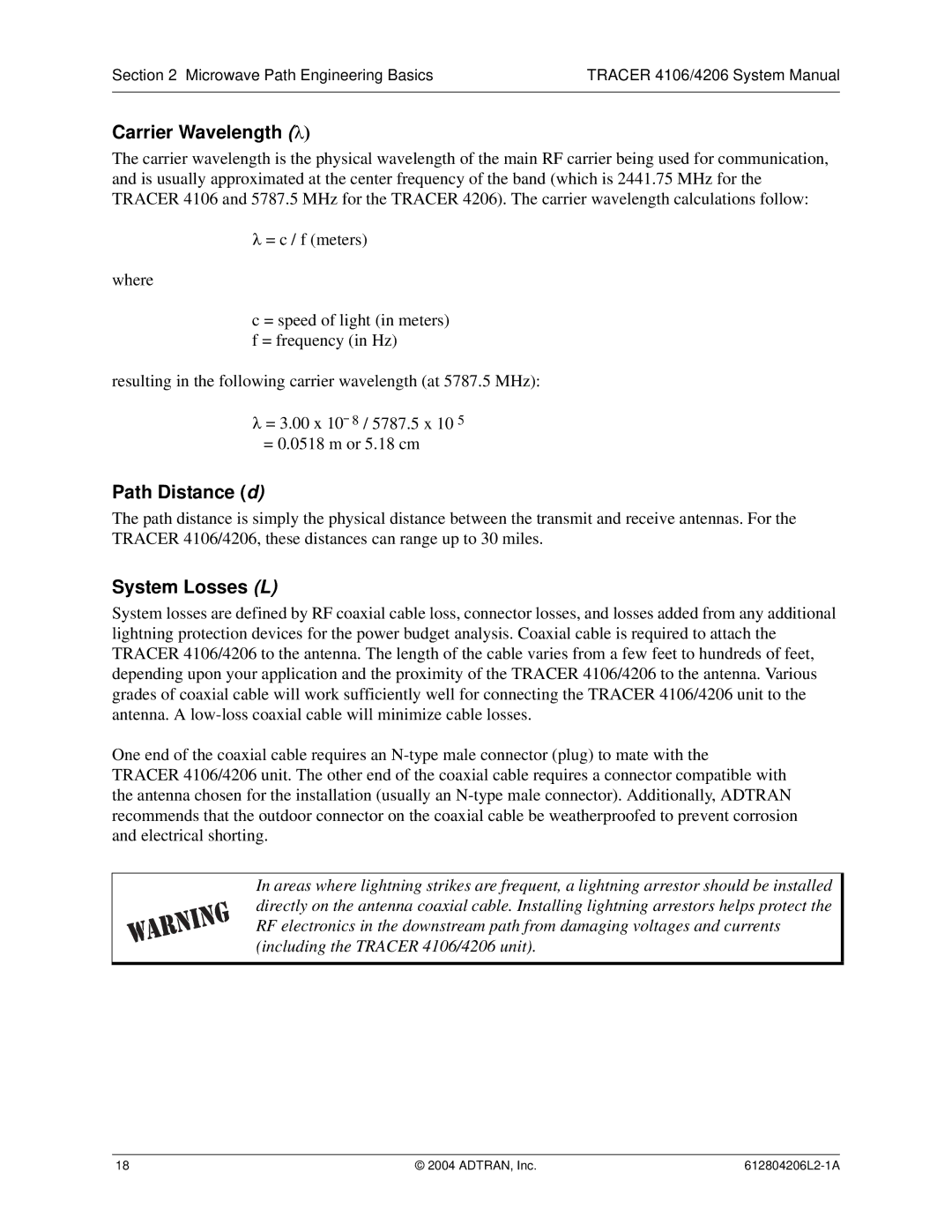
Section 2 Microwave Path Engineering Basics | TRACER 4106/4206 System Manual |
|
|
Carrier Wavelength (λ)
The carrier wavelength is the physical wavelength of the main RF carrier being used for communication, and is usually approximated at the center frequency of the band (which is 2441.75 MHz for the TRACER 4106 and 5787.5 MHz for the TRACER 4206). The carrier wavelength calculations follow:
λ= c / f (meters)
where
c = speed of light (in meters) f = frequency (in Hz)
resulting in the following carrier wavelength (at 5787.5 MHz):
λ= 3.00 x 10¯8 / 5787.5 x 10 5
=0.0518 m or 5.18 cm
Path Distance (d)
The path distance is simply the physical distance between the transmit and receive antennas. For the TRACER 4106/4206, these distances can range up to 30 miles.
System Losses (L)
System losses are defined by RF coaxial cable loss, connector losses, and losses added from any additional lightning protection devices for the power budget analysis. Coaxial cable is required to attach the TRACER 4106/4206 to the antenna. The length of the cable varies from a few feet to hundreds of feet, depending upon your application and the proximity of the TRACER 4106/4206 to the antenna. Various grades of coaxial cable will work sufficiently well for connecting the TRACER 4106/4206 unit to the antenna. A
One end of the coaxial cable requires an
TRACER 4106/4206 unit. The other end of the coaxial cable requires a connector compatible with the antenna chosen for the installation (usually an
In areas where lightning strikes are frequent, a lightning arrestor should be installed directly on the antenna coaxial cable. Installing lightning arrestors helps protect the RF electronics in the downstream path from damaging voltages and currents (including the TRACER 4106/4206 unit).
18 | © 2004 ADTRAN, Inc. |
